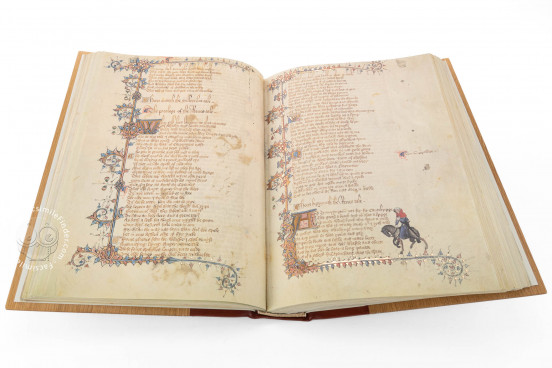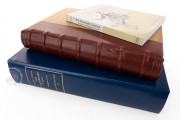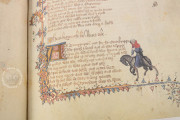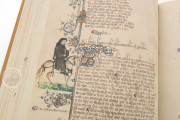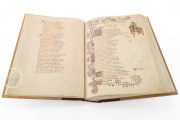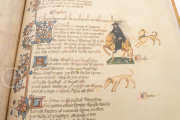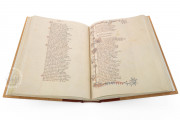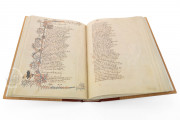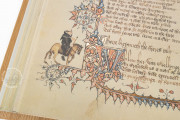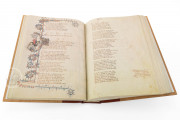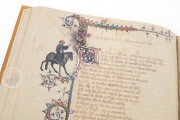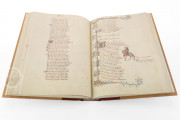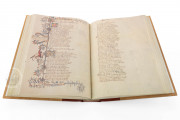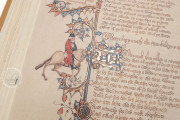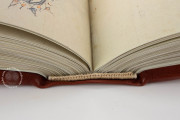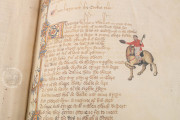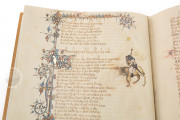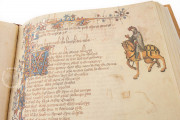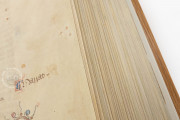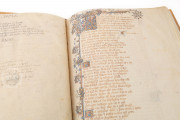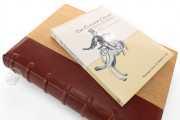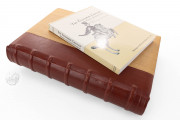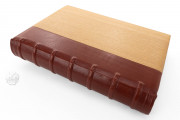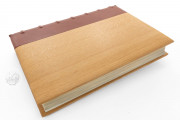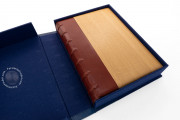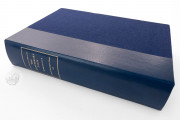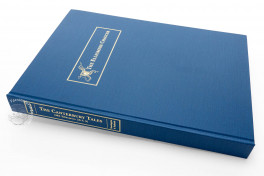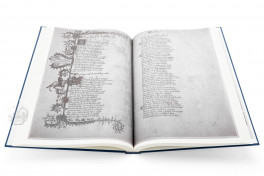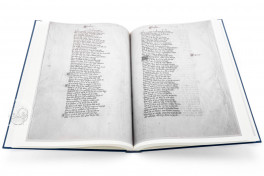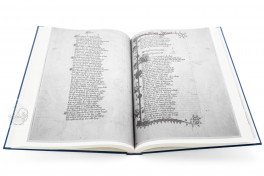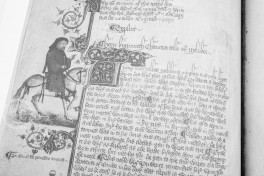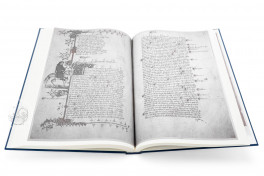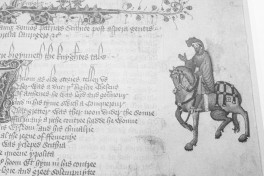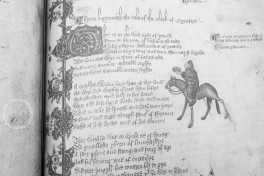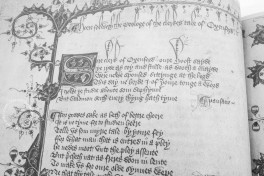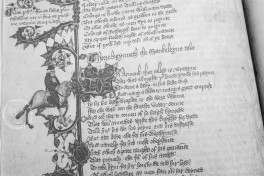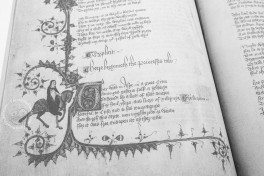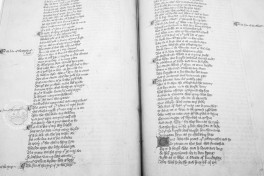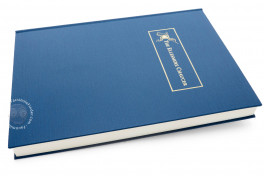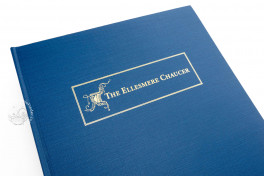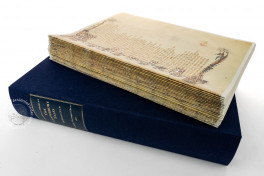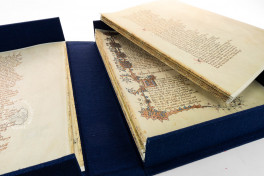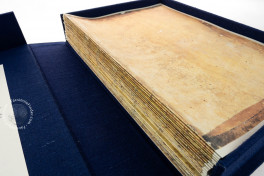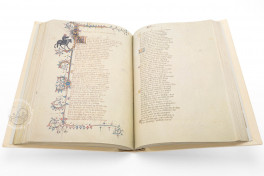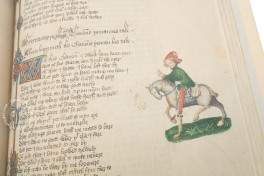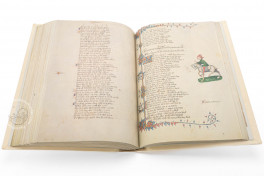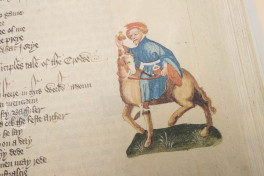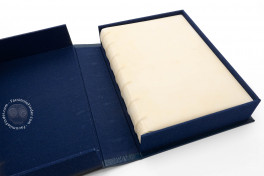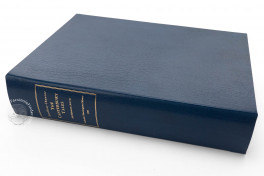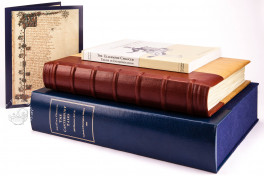The Ellesmere Chaucer is one of the earliest manuscripts of The Canterbury Tales by Geoffrey Chaucer. An acknowledged masterpiece of Middle English literature, the Tales remained unfinished. Copied between 1400 and 1405 in London or Westminster, the Ellesmere manuscript transmits most of the text and is the basis for most modern editions. It stands out from other manuscripts of the text for its twenty-three marginal vignettes that depict the tellers of the tales, including Chaucer.
The Canterbury Tales, a work of Middle English poetry and prose, is a collection of stories told mainly by fictional pilgrims of varying social status on their way to the famous pilgrimage site of the shrine of Saint Thomas Becket at Canterbury Cathedral. Their host at an inn in Southwark, where they begin their journey, suggests that they entertain their traveling companions with tales.
Generic and Specific Portraits
The Ellesmere manuscript is justly famous for its portraits of the tellers of the tales, most of whom are known in the text by their occupations. The occupations are often signaled in the portraits by objects, such as keys for the reeve (estate manager), bowl and meat hook for the cook, and a urine specimen for the physician (fols. 42r, 47r, and 133r). The portrait of Chaucer, the teller of Sir Thopas's and Melibee's tales, is a likeness in the modern sense (fol. 153v).
Three Artists
The portraits—some painted before and some after the bar borders—are the work of three artists. The first painter is responsible for the most: the opening sixteen portraits, plus the last (fols. 10r-148v and 206v). The second illuminator painted only the portrait of Chaucer (fol. 153v). The third painter, who followed the larger format introduced by the second painter, painted five of the vignettes (fols. 169r-203r). The latter two artists always situated their mounted storytellers on patches of grassy land, absent from the portraits of the first painter.
Horses of Many Colors
Although Chaucer stipulates that some pilgrim storytellers have horses, some would have traveled on foot. The artists, however, pictured them all on horseback. The dappled-gray mount of the reeve and the fine brown horse of the monk correspond to Chaucer's descriptions (fols. 42r and 169r). The other horses range in size from thin to stout and in color from white to nearly black. Their poses are also varied, the most distinctive being the squire's horse, which rears on its hind legs (fol. 115v).
A Busy Scribe
The scribe of the Ellesmere Chaucer was also the scribe of many other manuscripts of Middle English literature, including an earlier but less complete manuscript of The Canterbury Tales. Whether he can be identified with Adam Pinkhurst (Pynkhurst), a member of London's Worshipful Company of Scriveners, is hotly debated.
A Deluxe Manuscript
The text is written in long lines (one column) in Anglicana, a form of Gothic Cursiva. There are running titles at the tops of the pages that identify the text on that page. Large initials of blue, pink, and red on gold with extensions that form bars sprouting spiky leaves and buds mark major textual divisions. The margins teem with citations of Chaucer's literary sources.
Many Early Modern Owners: Sixteenth Century
The manuscript may have been made for Thomas Chaucer (d. 1434), the author's son, although not necessarily at his behest. In the sixteenth century, the manuscript was in possession of the de Vere family, then the Drury family. Henry Payne sold it to Giles Arlington, who sold it to Roger North (1530-1600), Baron North.
Seventeenth and Eighteenth Centuries
At North's death, the book was acquired by Thomas Egerton (d. 1617), later Baron Ellesmere and Viscount Brackley. It was then in the library of his son, John Egerton (1579-1649), Earl of Bridgewater. While in the possession of Francis Egerton (1736-1803), Duke of Bridgewater, it was housed at Bridgewater House, the family's London residence.
Path to the Huntington
Bridgewater House and its library were bequeathed to George Granville Leveson-Gower (1758-1833), Duke of Sutherland, and then to his son Francis Egerton (1800-1857), later Earl of Ellesmere. Henry Edwards Huntington (1850-1927) purchased the Bridgewater Library in 1917. It was a part of the enormous collection of manuscripts and printed books amassed by Huntington that formed the core collection of the newly built Huntington Library, which opened in 1921.
We have 4 facsimiles of the manuscript "Ellesmere Chaucer":
- Canterbury Tales: The new Ellesmere Chaucer Facsimile (Monochrome Edition) facsimile edition published by Maruzen-Yushodo Co. Ltd., 1997
- Canterbury Tales: The New Ellesmere Chaucer Facsimile (Unbound Edition) facsimile edition published by Maruzen-Yushodo Co. Ltd., 1995
- Canterbury Tales: The New Ellesmere Chaucer Facsimile (Deluxe Edition) facsimile edition published by Maruzen-Yushodo Co. Ltd., 1995
- Canterbury Tales: The New Ellesmere Chaucer Facsimile (Bound Edition) facsimile edition published by Maruzen-Yushodo Co. Ltd., 1995


